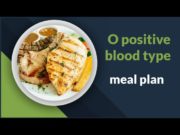Iodine is this little thing your body needs, like a tiny superhero nutrient. What it Does Iodine helps your cells turn food into energy. It’s especially crucial for keeping your thyroid in check and making those thyroid hormones that keep things running smoothly.
Where to Find It Okay, so there’s this thing called iodized salt. It’s like regular salt but with a boost of iodine. That’s the main go-to for iodine. Then there’s seafood. Fish like cod, sea bass, haddock, and perch are loaded with iodine.
READ ALSO: Iodine: The Essential Mineral You Need for a Healthy Diets How to Get It!
Kelp is like the veggie superhero of the sea, packing a punch of iodine. Don’t forget about dairy – it’s got some iodine too. Plants grown in iodine-rich soil are also good sources.
The Not-So-Good Stuff If you don’t get enough iodine, it’s bad news. You might end up with a goiter (an enlarged thyroid) or hypothyroidism. And guess what? Women are more likely to be short on iodine than men. Pregnant women and older kids need to pay extra attention.
But hey, iodine deficiency is pretty rare in the U.S., so we’re good on that front.
Iodine overdose is super rare here too. Too much iodine can mess with your thyroid. Taking a bunch of iodine with certain meds might even lead to hypothyroidism.
What You Should Do To keep things simple, eat a balanced diet with a mix of foods.
Most folks get enough iodine from seafood, iodized salt, and veggies grown in iodine-rich soil. Just make sure that the salt shaker says “iodized” on it. There are 45 micrograms of iodine in a quarter teaspoon of that stuff. And if you’re into cod, a 3 oz. serving gives you 99 micrograms of iodine.
For the nitty-gritty on how much iodine you need, check out the Dietary Reference Intakes. They’re like the superhero guidelines for nutrient intake.
For example:
- Infants need 110 to 130 micrograms a day.
- Kids aged 1 to 13 need 90 to 120 micrograms a day.
- Teens and adults need 150 micrograms a day.
- Pregnant ladies need 220 micrograms, and lactating moms need 290 micrograms.
The exact amount depends on your age, gender, and other stuff. If you’re pregnant or breastfeeding, you might need more. Ask your healthcare buddy what’s right for you.






















